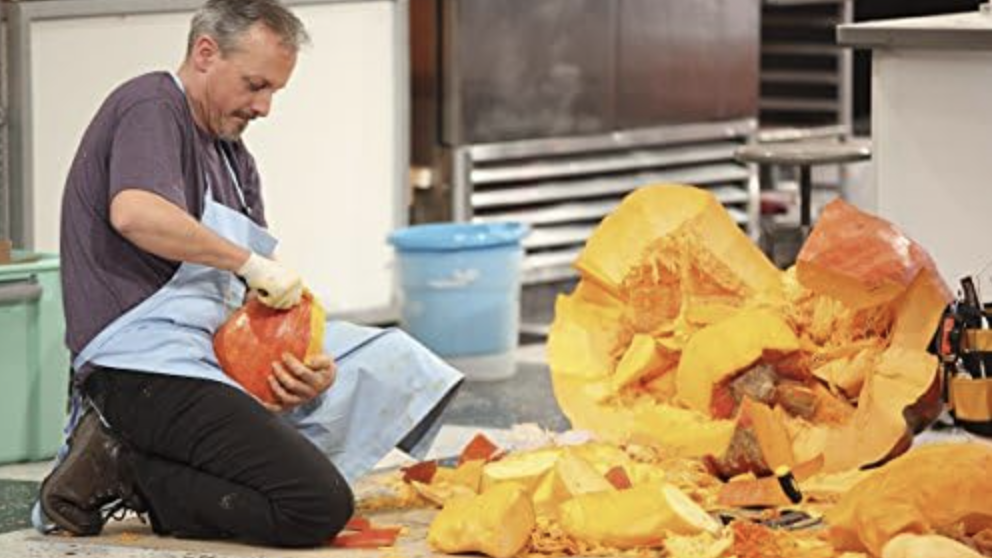It must be October based on the Halloween decorations in the big home improvement store. You would think Christmas is here as well, as blow-up snowmen compete with animatronic witches and werewolves for the same floor space in these stores.
With all the conflicting data thrown at us, you might have missed that September was Hunger Action Month. Nothing to be ashamed of, as each month probably has a half dozen different “themes” attached to them these days, making it nearly impossible to keep track of them all.
But since my day job is at a homeless shelter in downtown Los Angeles, where feeding the hungry is a major component of the services provided, I automatically thought of how we treat food while watching one of my family’s guilty pleasures on television.
“Halloween Wars” on the Food Network has become a family tradition in our household. It is our official commencement of fall, and we get together for the next several Sunday nights for some lowbrow entertainment — we are not talking “Masterpiece Theater” here. “Halloween Wars” is a baking competition show where teams of baking specialists vie for a grand prize monetary award by creating Halloween-themed cakes and pumpkins.
Though not exactly the zenith of television art, when you are going in and out of consciousness on the couch, as I am wont to do these days, it really doesn’t matter. Besides, my wife and daughter can always fill me in on which team was eliminated and we all pretend that it really matters. But it was during one of my more lucid and conscious moments, watching the premiere of this year’s “Halloween Wars,” where it dawned on me just how disconnected we can become from certain everyday realities.
There was a particular moment in the season opener where one of the team’s pumpkin carvers was tearing into a pumpkin roughly the size of a compact car. He was using an industrial-grade vegetable peeler like Edward Scissorhands and was awash in flying remnants of pumpkin skin. Instead of being intrigued as to what kind of pumpkin sculpture this food artisan was creating, I could only think of all the food that was about to be wasted.
“Halloween Wars” is a show where there is more than just pumpkin laid to waste. There are cakes baked, cookies and candies confected, and, of course, lots of pumpkins used to create the edible artworks. I do not think many people eat the results. The judges take little bites of the assigned “treats” that are part of the show’s competitive rubrics, but I cannot imagine even a ravenous television crew able to eat most of the culinary creations spawned by this show.
People of a certain age were told at dinner tables — when we did not want to eat black-eyed peas, spinach, or stuffed bell peppers — that there were children in China who would have been more than willing to take our place. The point good parents were making was that wasting food is wrong. And here my family and I were, watching food as entertainment.
At my job, food is not a trivial thing. In fact, food always has been a major component in the many shelters and service programs that tend to the needs of the homeless population in and around Los Angeles’ Skid Row. At the shelter where I work, and at many others around here, breakfast, lunch, and dinner are provided 365 days a year. In many cases, that hot breakfast acts like a calling card, and may be the first simple act that leads someone through the doors of a shelter and into a program that will change their life.
Ironically, the homeless shelters in Los Angeles could not provide the number of meals they do if not for the “throwaway” culture Pope Francis described in Laudato Si (“Praise Be to You”). Shelters rely on surplus food from restaurants, sports stadiums, and food banks to keep their kitchens operating on a year-round basis.
Sadly, the number of people needing meals might also be the result of the same throwaway culture. There are certainly parts of our world where people are starving, but no one who lives on Skid Row does not have enough to eat. There is plenty of food to be found. But that does not mean people are not “hungry.” The problem arises when people “feed” their hunger from pain and despair with things that are not food, but poison.
It is good to remember, when we watch something as trivial as a baking competition show on TV, or push our plate away from the dinner table because we took more than we could eat, there are people standing in line for food only a few miles from where we live, and people in other parts of the world where there is no line for food at all.

